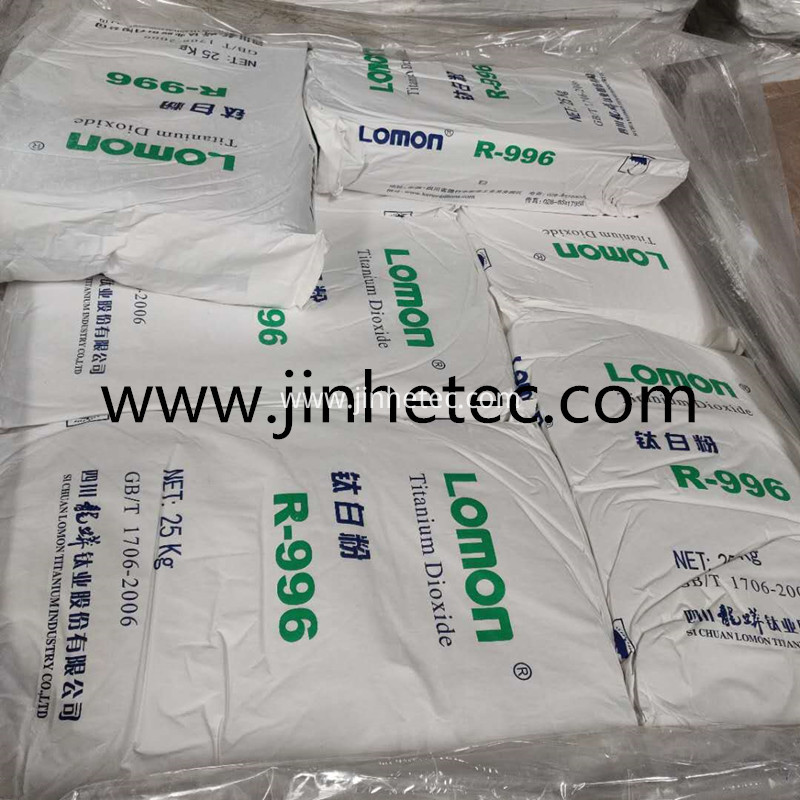
Privacy statement: Your privacy is very important to Us. Our company promises not to disclose your personal information to any external company with out your explicit permission.

1. Relative density
Among the common white pigments, the relative density of Titanium Dioxide is the smallest. Among the white pigments of the same quality, the surface area of titanium dioxide is the largest and the pigment volume is the highest.
2. Melting point and boiling point
Because anatase transforms into rutile at high temperature, the melting point and boiling point of anatase titanium dioxide are virtually nonexistent. Only rutile type titanium dioxide has melting point and boiling point. The melting point of rutile titanium dioxide is 1850 ℃, the melting point in air is (1830 ± 15) ℃, and the melting point in oxygen enriched titanium dioxide is 1879 ℃. The melting point is related to the purity of titanium dioxide. The boiling point of rutile titanium dioxide is (3200 ± 300) ℃, and the titanium dioxide is slightly volatile at this high temperature.
3. Dielectric constant
Because of its high dielectric constant, titanium dioxide has excellent electrical properties. When determining some physical properties of titanium dioxide, the crystal direction of titanium dioxide should be considered. The dielectric constant of anatase titanium dioxide is relatively low, only 48
4. Conductivity
Titanium dioxide has the properties of semiconductor, its conductivity increases rapidly with the rise of temperature, and it is also very sensitive to hypoxia. The dielectric constant and semiconductor properties of rutile titanium dioxide are very important to the electronic industry, which can be used to produce ceramic capacitors and other electronic components.
5. Hardness
According to Mohs hardness scale, rutile titanium dioxide is 6 ~ 6.5, anatase titanium dioxide is 5.5 ~ 6.0, so anatase is used to avoid abrasion of spinneret hole in chemical fiber matting.
6. Hygroscopicity
Although titanium dioxide has hydrophilicity, its hygroscopicity is not very strong, rutile type is smaller than anatase type. The hygroscopicity of titanium dioxide is related to its surface area. The surface area is large and the hygroscopicity is high. It is also related to the surface treatment and properties.
7. Thermal stability
Titanium dioxide is a kind of material with good thermal stability.
8. Dispersion
Due to the agglomeration of titanium dioxide (clumps) (aggregates and agglomerates) formed in inventory or packaging, a uniform mixture of titanium dioxide and Resin is formed after dispersion and stirring. Good dispersion can not only eliminate the phenomenon of spots and streaks in the final product, but also ensure the maximum light scattering efficiency. In the selection of titanium dioxide grade and dispersion process, the following three points should be paid special attention to:
The dispersion of titanium dioxide grades varies with the manufacturing process. For example, the grade of titanium dioxide surface treated by inorganic oxide is usually easier to disperse in the liquid system (plasticizers, plasticizers) than the final grade. On the other hand, the grades that are not surface treated are usually dispersed in the manufacturing process of dry blending, such as polyethylene, polystyrene, or other molding resins.
Titanium dioxide particles cannot be broken individually. No matter how much energy is involved in the agglomeration process, when the bound agglomerations are broken, they are just the separation of particles from each other.
The word dispersion is often used equivocally. For example, some of the "dispersion" problems are actually problems of insufficient dilution in the formula, leaving insoluble spots in the plastic.
Titanium dioxide is a popular pigment in plastic applications because it can provide the best scattering effect at low pigment content. In addition to optical properties, other important product characteristics can also determine the grade of titanium dioxide for special applications. Some important product features are discussed in this chapter.
9. Optical properties
When choosing the application of titanium dioxide, the basic optical properties such as adaptability, color intensity, background color and color should be considered. The adaptability and tinting intensity of white pigment show the scattering efficiency of light; adaptability shows the opaque ability of plastic system of white pigment; while coloring intensity shows the whiteness and brightness of white pigment to colored plastic system. Because it is easy to measure, the color intensity is most commonly used to represent the light scattering efficiency of white pigments. In order to measure the relative coloring strength, 0.008 g Carbon Black was added to each gram of titanium dioxide sample. The use right was to use this mixed black pigment group (masterbatch) to disperse the plastic. The gray plastic produced by the mixture was made into uniform, opaque plastic sheets or moldedchips. The titanium dioxide test port with the maximum light scattering efficiency can provide the lightest gray and the best light reflection.

Privacy statement: Your privacy is very important to Us. Our company promises not to disclose your personal information to any external company with out your explicit permission.

Fill in more information so that we can get in touch with you faster
Privacy statement: Your privacy is very important to Us. Our company promises not to disclose your personal information to any external company with out your explicit permission.